 |
|

|
Gojome Map
Gojome Map for Strollers
Visiting Shitamachi’s history
Gojome Road Map
“Tsurikichi Sanpei” shooting cites tour
Gojome Map for Strollers
Visiting Shitamachi’s historyGojome Road Map
“Tsurikichi Sanpei” shooting cites tourHistory
Fukurokuju Sake Brewery
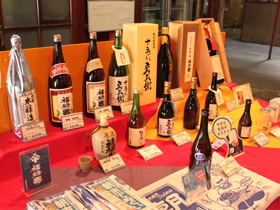
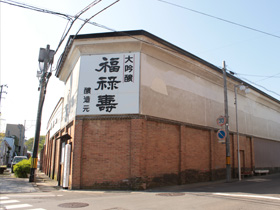
Fukurokuju Sake Brewery was founded in Gojome approximately 320 years ago. The traditional outer wall made of bricks and the gassho-style warehouses with the distinctive structure with sloping roofs make up the quaint look of the brewery. It is notable that for more than 200 years the upstairs living quarters has remained well-maintained, and together with the downstairs shop, brewery and office, they are registered as a Japanese Tangible Important Property.
Gojome is also the hometown of the famous, historical sumo wrestler “Yotsu-guruma Taihachi.” Local history claims that Taihachi once worked for Fukurokuju brewery. As a sumo wrestler in the Edo period he is also known for participating in a real fight between Me-gumi, firemen, and sumo wrestlers, which became forever captured in a popular kabuki play called “Me-gumi no kenka.”
The sake is produced with Gojome’s semi-hard groundwater, using three-hundred year old techniques, and it has an excellent deep flavor. Please visit Fukurokuju Sake Brewery. You can tour the Brewery for Free.
Kanban Kenchiku (Kanban architecture)
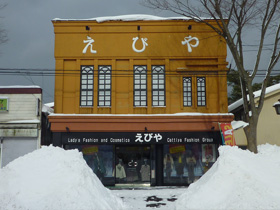
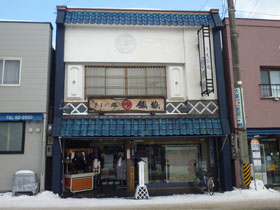
Kanban Kenchiku is an architectural style that makes the streets of Gojome distinctive. Kanban means advertising display or shop name board. It is a modern architecture style with the outer walls decorated by mortar or metallic plates, which make Kanban-like looks of the walls. The style became popular after the Great Kanto Earthquake in 1923 around Kanto area. At the time, attics were often added to the two-storied wooden office-house buildings, and instead of making eaves, Kanban were finely attached
Sanpei's House
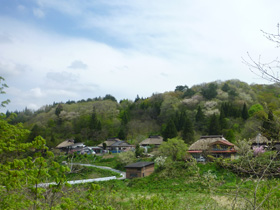
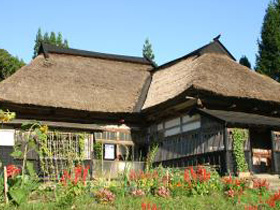
In Kitanomata Village in Gojome’s coutryside, there is an old house with thatched roof. It was used as Sanpei's house when the film “Tsurikichi Sanpei”, released in March 2009, was shot in the village. The typical mountainous surroundings with several similar Japanese old houses are so tranquil that make us feel as if back in time. You can see inside of Sanpei’s house, where the pictures of the making of the movie are exhibited.
*Please be careful about making noise or ill-manner of parking, since around Sanpei’s house are normal residential houses.
Historic Places
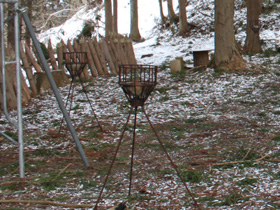
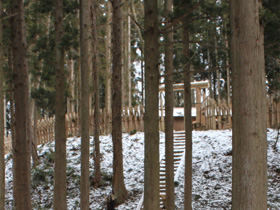
In the eighth century, Gojome has become the northern edge district of "ritsuryo" legal codes nation centered in Nara, facing Emishi (Imperial Court to Northern Japan) land. In the fourteenth century, was a prosperous time in Gojome under Land Lord Ando stewardship. Thus, there are several historic remains related to military and public administration of that time. For example, Ishizaki-Iseki is a ruin of a huge administrative facility under the control of the central government, which was built for the purpose of defense against Emishi’s southward invasion. There are also some castles ruins that Lord Ando had built, such as Sannai Jo-shi, Babame Jo-shi, as well as the castle remains located in the back of Hachiro-gata. Others found are ancient tombs, such as Iwanoyama ancient tombs, Suzumedate ancient well, and Nakayama antiquity where a lot of artifacts have been unearthed, such as spaceman clay figurines from about 500 AD. In the Entsu-ji (Entsu Temple), you can witness harnesses with the family crest of the Miura family. Why not enjoy touring the old castles, and then partake in a hot spring nearby?
Temple and Shrine
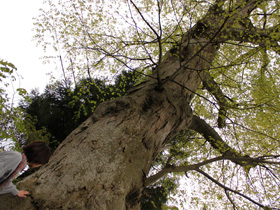
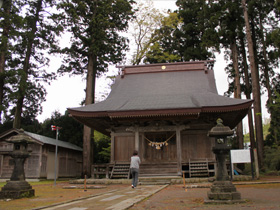
There are fifteen temples in Gojome, and a number of shrines throughout town. Most of them have something to see, such as giant trees, or something enshrined in accordance with the local folk tales. It is refreshing to walk around these sites. Also, some mountains in the area such as Akakura-yama. Yakushi-yama, and Mori-Yama are said to have been shugen training spots for mountain priests. Today, a lot of temples and shrines for the belief of Fudo (Acala
Traditional Art
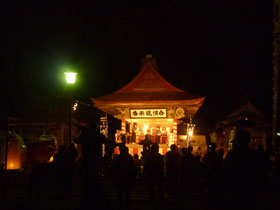
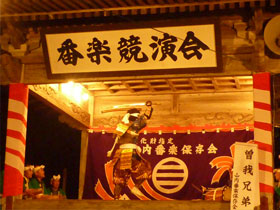
In Akita, the local folk entertainment is handed down from one generation to another to today. Sasara came down from Sannai, Nakamura, Nishino, & Koiji districts in Gojome. You can see Kagura, a dedication dance, in Sannai-Bangaku and Nakamura-Bangaku. There used to be many cabalistic temples in Gojome, due to the wide spread of belief for Fudo (Acala
Folk Tales
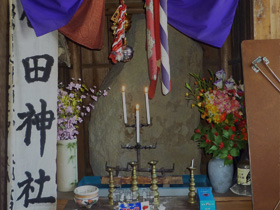
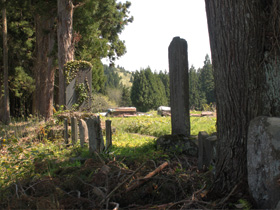
Many folk tales have been handed down for generations in Gojome. These tales help us learn our heritage – antiquated stories, culture and beliefs. Why not visit and see the places and goods that appear in the folk tales? For example, Tatsuishi (dragon stone) is a stone still enshrined in Shuen-ji (Shuen Temple)
Gojome kan (Gojome Hall)
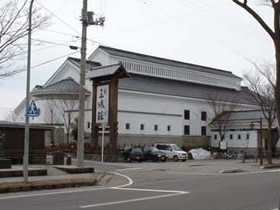
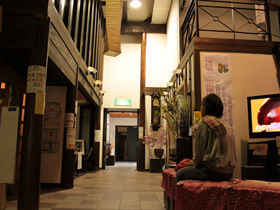
It is a renovated facility, which originally was an agricultural warehouse built in early Showa period (around 1920s to 1930s). In the hall, there is the literature museum of Ms. Tsuyako YADA, a novelist born in Gojome. In her literary works, she often wrote about common people in Akita and their lifestyles at the time. You will find her original manuscripts and her favorite items in the museum. Her memorial is located in front of Fukurokuju Sake Brewery on the morning market street.
In the hall, a cafeteria “Yuki”, Japanese-style pub “Sankai no Taki”, and a multi-purpose hall are also available.

